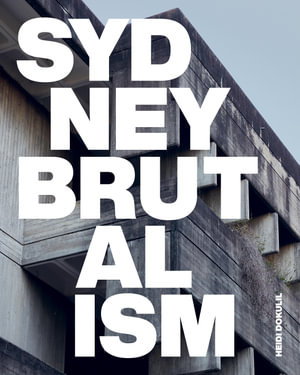
PublishedNewsouth Publishing, December 2023 |
ISBN9781742236698 |
FormatSoftcover, 240 pages |
Dimensions24cm × 19cm |
*
Big and bold or soft and sculptural, or a mix of the two, it's not until you get up close that you feel brutalism's radical roots.
Brutalist architecture hit Sydney in the late 1950s when local archi tects and their international peers experimented with raw concrete and brick and kicked off a revolution. These brave new buildings were ambitious, optimistic - often divisive - and predominantly made onsite by hand, not machine. For the next 30 years Sydney produced some of the world's best examples of brutalist architecture. Sirius. The Sydney Masonic Centre. UTS Tower. The ribbed concrete shells of the Sydney Opera House.
Design writer Heidi Dokulil explores Sydney's brutalist architecture, its international influences, its architects, builders and residents, and the public buildings, university campuses and homes that changed the face of the city.
The recent outcry over the threatened demolition of the Sirius building in Millers Point has generated new interest in these brutal beauties of Australian architecture. Yet many brutalist buildings have been demolished and others remain under threat. Sydney Brutalism reveals the stories behind Sydney's bold and innovative brutalist buildings, the contemporary architects and projects they continue to inspire, and dynamic photography by a line-up of the world's best architectural photographers. Long live the bruts!
'A brilliantly researched deep dive into the subject - Sydney Brutalism asks why our concrete monsters matter, while exploring international antecedents and contemporary executions. Powerful photography contributes to this important exploration of a controversial architectural genre.' - Karen McCartney

